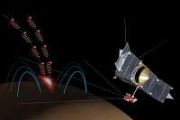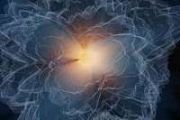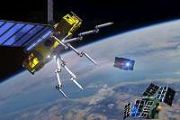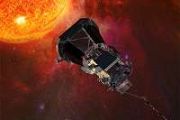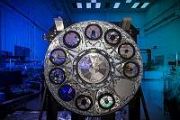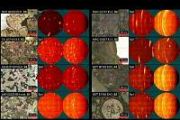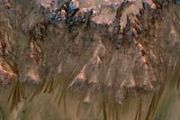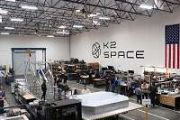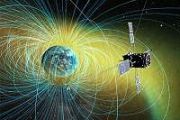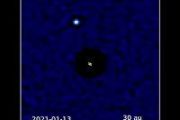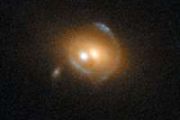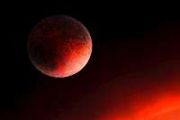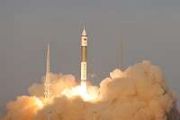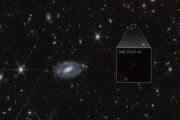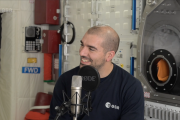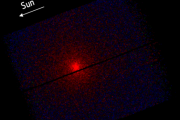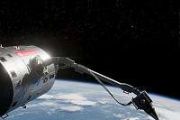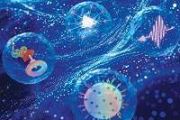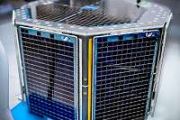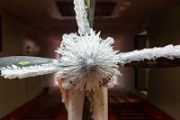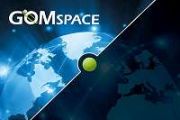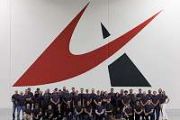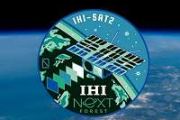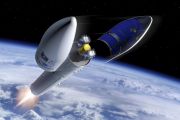
Copernical Team
Small Satellites Forum back again in Spain in its fourth edition next February
 The aerospace sector at an international level will meet again in Spain with the celebration of the international forum "Small Satellites and Services International Forum" (SSSIF), which will take place in Malaga from February 21 to 23. The meeting, which this year will celebrate its fourth edition, will serve to analyze the main technical characteristics of current small satellites, the challen
The aerospace sector at an international level will meet again in Spain with the celebration of the international forum "Small Satellites and Services International Forum" (SSSIF), which will take place in Malaga from February 21 to 23. The meeting, which this year will celebrate its fourth edition, will serve to analyze the main technical characteristics of current small satellites, the challen Untangling a knot of galaxy clusters
 Astronomers have captured a spectacular, ongoing collision between at least three galaxy clusters. Data from NASA's Chandra X-ray Observatory, ESA's (European Space Agency's) XMM-Newton, and a trio of radio telescopes is helping astronomers sort out what is happening in this jumbled scene. Collisions and mergers like this are the main way that galaxy clusters can grow into the gigantic cosmic ed
Astronomers have captured a spectacular, ongoing collision between at least three galaxy clusters. Data from NASA's Chandra X-ray Observatory, ESA's (European Space Agency's) XMM-Newton, and a trio of radio telescopes is helping astronomers sort out what is happening in this jumbled scene. Collisions and mergers like this are the main way that galaxy clusters can grow into the gigantic cosmic ed Watch distant worlds dance around their sun
 In 2008, HR8799 was the first extrasolar planetary system ever directly imaged. Now, the famed system stars in its very own video.
Using observations collected over the past 12 years, Northwestern University astrophysicist Jason Wang has assembled a stunning time lapse video of the family of four planets - each more massive than Jupiter - orbiting their star. The video gives viewers an unp
In 2008, HR8799 was the first extrasolar planetary system ever directly imaged. Now, the famed system stars in its very own video.
Using observations collected over the past 12 years, Northwestern University astrophysicist Jason Wang has assembled a stunning time lapse video of the family of four planets - each more massive than Jupiter - orbiting their star. The video gives viewers an unp Will machine learning help us find extraterrestrial life
 When pondering the probability of discovering technologically advanced extraterrestrial life, the question that often arises is, "if they're out there, why haven't we found them yet?" And often, the response is that we have only searched a tiny portion of the galaxy. Further, algorithms developed decades ago for the earliest digital computers can be outdated and inefficient when applied to moder
When pondering the probability of discovering technologically advanced extraterrestrial life, the question that often arises is, "if they're out there, why haven't we found them yet?" And often, the response is that we have only searched a tiny portion of the galaxy. Further, algorithms developed decades ago for the earliest digital computers can be outdated and inefficient when applied to moder Perseverance completes Mars Sample Depot
 Less than six weeks after it began, construction of the first sample depot on another world is complete. Confirmation that NASA's Perseverance Mars rover successfully dropped the 10th and final tube planned for the depot was received around 5 p.m. PST (8 p.m. EST) Sunday, Jan. 29, by mission controllers at the agency's Jet Propulsion Laboratory in Southern California.
This major milestone
Less than six weeks after it began, construction of the first sample depot on another world is complete. Confirmation that NASA's Perseverance Mars rover successfully dropped the 10th and final tube planned for the depot was received around 5 p.m. PST (8 p.m. EST) Sunday, Jan. 29, by mission controllers at the agency's Jet Propulsion Laboratory in Southern California.
This major milestone Columbia disaster that scuttled the space shuttle
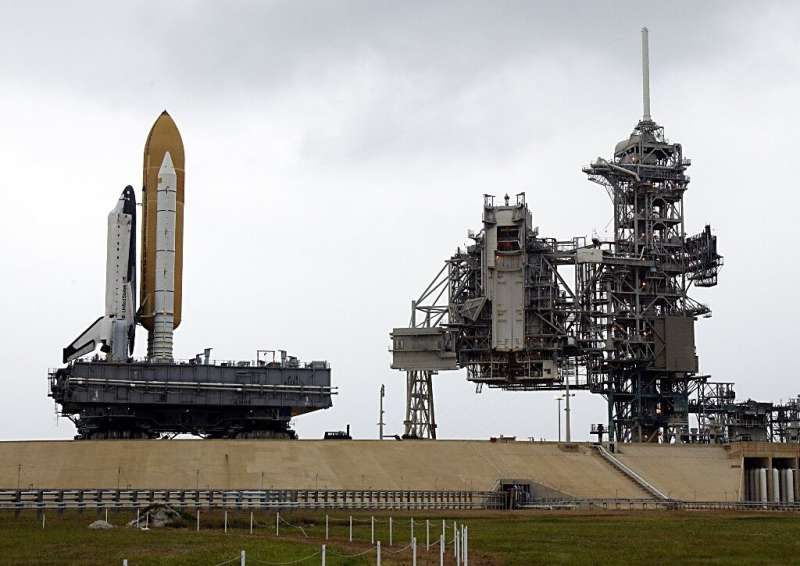
America may now be aiming to put astronauts back on the Moon, but for years the United States turned its back on manned missions after the Columbia space shuttle disaster.
Its space program suffered a catastrophic setback when all seven astronauts were killed when the shuttle broke up on re-entering the Earth's atmosphere 20 years ago on February 1, 2003.
It was the second shuttle disaster after the Challenger explosion of 1986 which also killed the crew and led to sharp criticism of the safety culture at NASA.
The shuttle fleet was grounded for two and a half years and it sparked a major shift in American space flights.
Dust bedevils Perseverance with damaging winds
 Scientists working on the Perseverance Mars 2020 rover mission have uncovered new insights about dust devils on the Red Planet, thanks to the meteorological sensors on the Mars Environmental Dynamics Analyzer (MEDA) instrument. The mission, which landed in Jezero crater in February 2020, has observed a high abundance of dust devils, with small seasonal variability.
According to the researc
Scientists working on the Perseverance Mars 2020 rover mission have uncovered new insights about dust devils on the Red Planet, thanks to the meteorological sensors on the Mars Environmental Dynamics Analyzer (MEDA) instrument. The mission, which landed in Jezero crater in February 2020, has observed a high abundance of dust devils, with small seasonal variability.
According to the researc ACME Lithium locates samples with high Lithium values using ASTERRA satellite technology
 ASTERRA and ACME Lithium, Inc. (ACME) jointly announced their teaming agreement and collaboration in which ASTERRA satellite-based technology was used in the discovery of the highest values of lithium to date in Fish Lake Valley, Nevada.
The use of ASTERRA technology produced a large number of locations of lithium value of above 100 parts per million (ppm), while traditional methods of exp
ASTERRA and ACME Lithium, Inc. (ACME) jointly announced their teaming agreement and collaboration in which ASTERRA satellite-based technology was used in the discovery of the highest values of lithium to date in Fish Lake Valley, Nevada.
The use of ASTERRA technology produced a large number of locations of lithium value of above 100 parts per million (ppm), while traditional methods of exp Two studies of volatile elements discovered in meteorites constrain the assembly of Earth
 In two separate studies, researchers identify nucleosynthetic isotope anomalies in the volatile elements potassium (K) and zinc (Zn) in meteorites, which constrain the origins of the material that formed Earth. According to both studies, roughly 90% of Earth's mass was contributed by non-carbonaceous (NC) material from the inner Solar System and about 10% by carbonaceous chondrite (CC) material
In two separate studies, researchers identify nucleosynthetic isotope anomalies in the volatile elements potassium (K) and zinc (Zn) in meteorites, which constrain the origins of the material that formed Earth. According to both studies, roughly 90% of Earth's mass was contributed by non-carbonaceous (NC) material from the inner Solar System and about 10% by carbonaceous chondrite (CC) material US Army space capabilities keep soldiers shooting, moving, communicating
 The U.S. Army Space and Missile Defense Command focused on integrating Army space capabilities in many of its 2022 operations.
In February, the United States and Europe intervened to help Ukraine with air defense systems, artillery systems and munitions, counter-unmanned aerial systems, radars, and more following Russian President Vladimir Putin's unprovoked invasion of Ukraine.
USAS
The U.S. Army Space and Missile Defense Command focused on integrating Army space capabilities in many of its 2022 operations.
In February, the United States and Europe intervened to help Ukraine with air defense systems, artillery systems and munitions, counter-unmanned aerial systems, radars, and more following Russian President Vladimir Putin's unprovoked invasion of Ukraine.
USAS 
